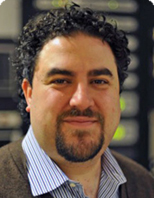Solar storm congressional testimony: ‘The risk is real’
Read Full Story on The Michigan Engineer New Center
A solar flare in 1859 engulfed Earth in a “magnetic tsunami”—spinning compasses, making the northern lights visible in the Caribbean and drawing sparks from telegraph lines that would remain inoperative for days.
Today’s power and technology-reliant society could fare worse should a similar solar event occur, Michigan Engineering researcher Justin Kasper told U.S. senators today.

Justin Kasper, Associate Professor Graduate advisor Program: Ph.D. in Space & Planetary Physics
Climate and Space Sciences and Engineering
Kasper, an associate professor of climate and space sciences and engineering, testified before the Senate Committee on Homeland Security and Governmental Affairs and discussed how best to protect the power grid from space weather.
“We need spacecraft closer to the sun providing earlier warning of Earth-directed events and their properties, better models of these eruptions and regional forecasts of geomagnetic disturbances,” Kasper wrote in his submitted testimony. “Most importantly, we need leadership with a mandate to coordinate and direct the research and operational components of space weather that are spread over multiple agencies.”

